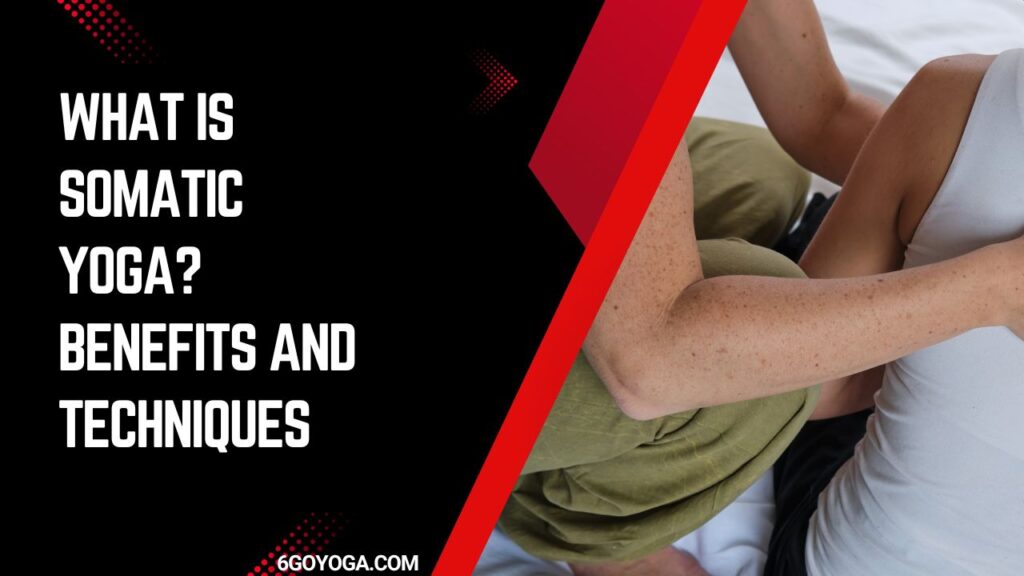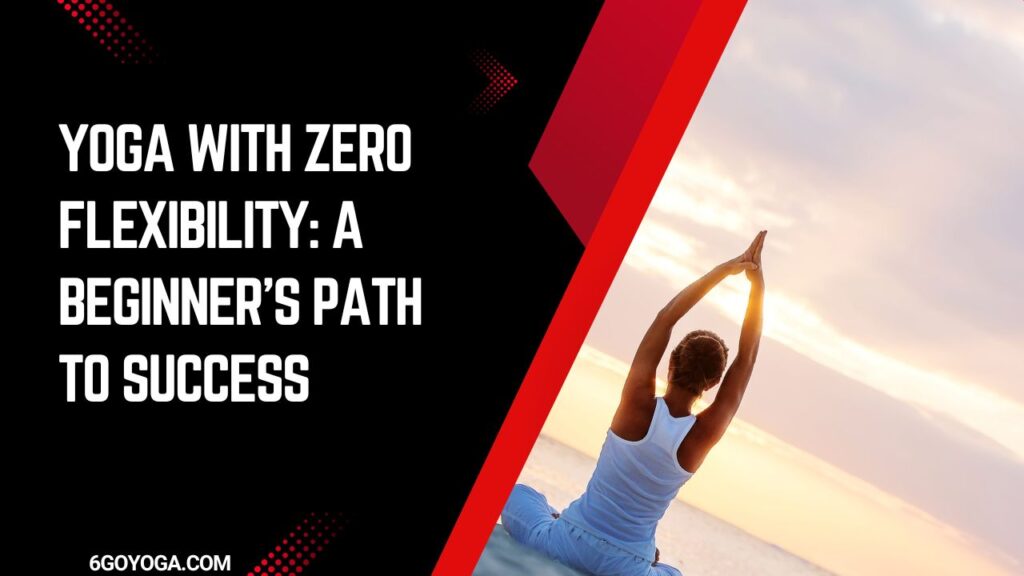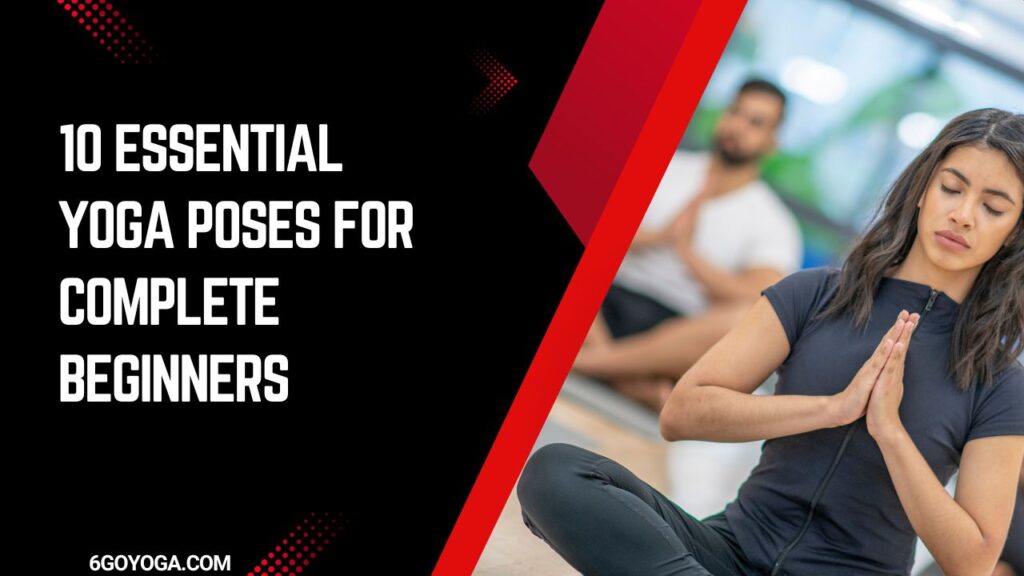Somatic Yoga is a gentle, mindful movement practice that focuses on releasing tension, improving body awareness, and promoting relaxation. Unlike traditional yoga styles, Somatic Yoga emphasizes slow, deliberate movements that reeducate the nervous system, helping the body release habitual patterns of tension and stress.
In this post, we explore what is somatic yoga is and how it combines gentle movement, mindfulness, and awareness to release tension and enhance body-mind connection. Discover the benefits of this practice and how it can support your overall well-being.
Key Features of Somatic Yoga
| Aspect | Details |
|---|---|
| Focus | Mindful movement and tension release |
| Intensity | Gentle and accessible to all levels |
| Goal | Improve body awareness and mobility |
Somatic Yoga is ideal for individuals seeking relief from chronic pain, stress, or stiffness, offering a therapeutic approach to wellness.
Quote: “Somatic Yoga invites you to reconnect with your body, moving with intention and awareness.” – Somatic Yoga Instructor
How Somatic Yoga Differs from Traditional Yoga
While traditional yoga often focuses on achieving poses and flow sequences, Somatic Yoga prioritizes internal awareness and micro-movements. The emphasis is on feeling rather than form, making it more introspective and therapeutic.
| Comparison | Traditional Yoga | Somatic Yoga |
|---|---|---|
| Focus | Poses and flow sequences | Awareness and nervous system reeducation |
| Intensity | Can vary from gentle to vigorous | Always gentle and slow |
| Goal | Physical fitness and flexibility | Tension release and mindfulness |
Quote: “Somatic Yoga shifts the focus from doing to being, making it a unique and healing practice.” – Wellness Blogger
The Origins of Somatic Yoga
Historical Background
Somatic Yoga emerged from the somatic movement practices developed by pioneers like Thomas Hanna and Moshe Feldenkrais in the mid-20th century. These approaches focused on neuro-muscular reeducation to improve movement patterns and alleviate pain. Somatic Yoga integrates these principles with traditional yoga techniques, creating a holistic practice that addresses the body and mind.
Timeline of Somatic Yoga Development
| Era | Milestone |
|---|---|
| Mid-20th Century | Development of somatic movement methods by Hanna and Feldenkrais |
| Late 20th Century | Integration of somatics into yoga practices |
| 21st Century | Popularization of Somatic Yoga as a therapeutic approach |
This evolution has made Somatic Yoga accessible to a wide audience seeking gentle and mindful movement practices.
Quote: “Somatic Yoga bridges the gap between ancient wisdom and modern movement science, creating a practice that heals from within.” – Somatic Yoga Teacher
Key Philosophies Behind Somatic Yoga
Somatic Yoga is rooted in the idea that the body and mind are deeply interconnected. By focusing on mindful movement and body awareness, practitioners can address physical tension, emotional stress, and habitual patterns stored in the nervous system.
Core Philosophies
| Philosophy | Explanation |
|---|---|
| Mind-Body Connection | Movement and mindfulness are intertwined, promoting holistic healing |
| Neuro-Muscular Awareness | Gentle movements retrain the nervous system to release tension |
| Empowerment Through Awareness | Practitioners gain a deeper understanding of their bodies, fostering self-care |
Quote: “Somatic Yoga teaches us that by tuning into the body, we can unlock profound physical and emotional freedom.” – Movement Specialist
Core Principles of Somatic Yoga
Awareness and Mindful Movement
The foundation of Somatic Yoga lies in cultivating awareness through slow, mindful movements. This focus helps practitioners reconnect with their bodies, recognizing areas of tension and imbalance.
Key Practices
| Practice | Benefit |
|---|---|
| Slow Movements | Allows for deeper awareness of sensations |
| Body Scanning | Identifies areas of tension and imbalance |
| Breath Awareness | Enhances relaxation and focus |
These practices empower individuals to take control of their wellness journey, addressing both physical and emotional needs.
Quote: “Mindful movement is the essence of Somatic Yoga, guiding practitioners toward a state of ease and balance.” – Certified Somatic Practitioner
Releasing Tension Through Neuro-Muscular Reeducation
Somatic Yoga employs neuro-muscular reeducation techniques to retrain the brain and body to release chronic tension patterns. By addressing the nervous system, it creates lasting changes in how the body moves and feels.
| Technique | Impact |
|---|---|
| Pandiculation | Resets muscle length and tension |
| Gentle Repetition | Reinforces new, healthier movement patterns |
| Focus on Sensation | Encourages the nervous system to relax |
These principles make Somatic Yoga a powerful tool for managing chronic pain, improving mobility, and reducing stress.
Quote: “By reeducating the nervous system, Somatic Yoga offers a pathway to freedom from chronic tension and discomfort.” – Somatic Movement Expert
Benefits of Somatic Yoga
Physical Benefits: Pain Relief and Mobility
Somatic Yoga provides significant physical benefits, especially for individuals dealing with chronic pain, stiffness, or mobility issues. Its gentle movements and neuro-muscular reeducation techniques help release tension, improve posture, and enhance overall physical function.
Key Physical Benefits
| Benefit | Explanation |
|---|---|
| Pain Relief | Addresses chronic pain by resetting muscle tension patterns |
| Improved Mobility | Enhances flexibility and range of motion through mindful movement |
| Better Posture | Aligns the body by reducing habitual tension |
Practitioners often report long-term improvements in pain management and physical ease.
Quote: “Somatic Yoga is like a reset button for the body, providing relief and restoring natural movement.” – Physical Therapist
Mental and Emotional Benefits: Stress Reduction
The mindful approach of Somatic Yoga also supports mental and emotional well-being. By focusing on slow, intentional movements and breath, it helps reduce stress and fosters a sense of calm and clarity.
Emotional Benefits
| Aspect | Effect |
|---|---|
| Stress Reduction | Lowers cortisol levels and promotes relaxation |
| Enhanced Focus | Encourages mindfulness and present-moment awareness |
| Emotional Release | Provides a safe space for processing and releasing stored emotions |
Quote: “Somatic Yoga not only soothes the body but also brings peace to the mind.” – Wellness Blogger
Somatic Yoga Techniques
Gentle Movements and Micro-Exercises
Somatic Yoga is characterized by gentle, small-scale movements that encourage the nervous system to reset habitual patterns. These micro-exercises are designed to be accessible and effective for all levels of fitness.
Examples of Somatic Movements
| Movement | Purpose | Benefit |
|---|---|---|
| Arch and Flatten | Mobilizes the spine | Relieves lower back tension |
| Shoulder Circles | Loosens shoulder and neck stiffness | Improves upper body mobility |
| Pelvic Tilts | Engages and releases the pelvic area | Enhances pelvic alignment |
These movements are typically repeated slowly to maximize body awareness and effectiveness.
Quote: “In Somatic Yoga, small movements lead to big transformations.” – Somatic Movement Specialist
Breathing Practices and Relaxation
Breathwork is an integral part of Somatic Yoga, helping to deepen relaxation and connect the body with the mind. Specific breathing techniques enhance the calming effects of the practice.
Breathing Techniques
| Technique | How It Works | Benefit |
|---|---|---|
| Diaphragmatic Breathing | Focuses on slow, deep breaths into the diaphragm | Reduces stress and improves oxygen flow |
| 4-7-8 Breathing | Inhale for 4 counts, hold for 7, exhale for 8 | Calms the nervous system and promotes relaxation |
These practices help integrate physical and mental wellness into a cohesive experience.
Quote: “The breath is a bridge between the body and mind, making it a powerful tool in Somatic Yoga.” – Yoga Therapist
Who Can Practice Somatic Yoga?
Ideal for Beginners and Those with Chronic Pain
Somatic Yoga is accessible to everyone, regardless of fitness level or experience. It is particularly beneficial for individuals dealing with chronic pain, injuries, or limited mobility, as the movements are gentle and adaptable.
Who Benefits Most?
| Group | How They Benefit |
|---|---|
| Beginners | Provides a gentle introduction to yoga and mindful movement |
| Chronic Pain Sufferers | Relieves pain by addressing tension patterns |
| Seniors | Improves mobility and reduces stiffness |
Somatic Yoga’s low-impact nature makes it safe and effective for all ages and abilities.
Quote: “Somatic Yoga meets you where you are, offering healing and growth at your own pace.” – Certified Instructor
Adapting Somatic Yoga for Different Needs
Somatic Yoga can be customized to suit individual needs, from rehabilitating injuries to enhancing athletic performance. Instructors often tailor classes to address specific goals or concerns.
Adaptation Strategies
| Need | Adaptation |
|---|---|
| Injury Recovery | Focus on gentle movements and avoiding strain |
| Stress Management | Emphasize relaxation and breathing practices |
| Performance Enhancement | Incorporate dynamic movements for strength and balance |
Quote: “Somatic Yoga’s adaptability makes it a valuable tool for personalized wellness journeys.” – Wellness Coach
Somatic Yoga vs. Other Yoga Styles
Comparing Key Features and Practices
Somatic Yoga stands apart from other yoga styles due to its focus on mindfulness, micro-movements, and nervous system reeducation. Unlike dynamic yoga forms like Vinyasa or Ashtanga, Somatic Yoga emphasizes slow, intentional movements to release tension and improve body awareness.
Comparison Table
| Aspect | Somatic Yoga | Traditional Yoga Styles |
|---|---|---|
| Focus | Mindful movement and tension release | Physical poses and flexibility |
| Pace | Slow and deliberate | Can be dynamic or static |
| Goal | Nervous system reeducation | Physical fitness and mindfulness |
Somatic Yoga complements traditional styles by addressing subtle tension patterns often overlooked in faster practices.
Quote: “Somatic Yoga is like the slow, thoughtful cousin of traditional yoga, offering depth and awareness to every movement.” – Yoga Instructor
Why Choose Somatic Yoga?
Somatic Yoga is ideal for individuals seeking a therapeutic approach to movement. It is particularly beneficial for those recovering from injuries, managing chronic pain, or looking to deepen their connection with their bodies.
Benefits of Choosing Somatic Yoga
| Reason | Benefit |
|---|---|
| Gentle on the Body | Suitable for all ages and fitness levels |
| Therapeutic Benefits | Helps alleviate pain and tension |
| Mind-Body Connection | Promotes holistic wellness |
Quote: “Somatic Yoga is not just about moving the body; it’s about understanding and healing it from within.” – Wellness Blogger
How to Get Started with Somatic Yoga
Finding Classes or Online Resources
Getting started with Somatic Yoga is simple, thanks to the availability of both in-person classes and online resources. Many studios now offer specialized Somatic Yoga sessions, while online platforms provide guided tutorials for home practice.
Tips for Finding Resources
| Option | Benefits |
|---|---|
| Local Studios | Personalized instruction and community support |
| Online Platforms | Flexible schedules and a variety of instructors |
| Books and DVDs | In-depth exploration of Somatic Yoga principles |
Choose the option that best suits your schedule and learning style.
Quote: “Somatic Yoga is more accessible than ever, with resources available for every lifestyle and budget.” – Certified Instructor
Simple Somatic Yoga Poses to Try
Start your practice with foundational Somatic Yoga poses that are easy to follow and effective for relaxation and tension release.
Beginner-Friendly Poses
| Pose | How to Perform | Benefit |
|---|---|---|
| Arch and Flatten | Lie on your back, arch and flatten the lower back | Relieves tension in the spine |
| Shoulder Rolls | Sit comfortably, roll shoulders forward and backward | Loosens neck and upper back tension |
| Leg Slides | Lie on your back, slide one leg out and back in | Enhances hip mobility |
These poses require minimal effort and are suitable for all skill levels.
Quote: “Simple movements in Somatic Yoga can lead to profound changes in how your body feels and moves.” – Somatic Movement Specialist
Common Misconceptions About Somatic Yoga
Addressing Myths and Clarifying Facts
Despite its growing popularity, Somatic Yoga is often misunderstood. Some believe it’s too slow to be effective, while others assume it’s only for people with injuries. In reality, Somatic Yoga offers benefits for individuals of all backgrounds and fitness levels.
Common Myths and Realities
| Myth | Reality |
|---|---|
| It’s Too Slow to Be Effective | The slow pace allows deeper awareness and lasting tension release |
| It’s Only for Pain Relief | Suitable for enhancing flexibility and mindfulness as well |
| It’s Not Yoga | Combines yoga principles with somatic movement techniques |
Quote: “Somatic Yoga is not about speed; it’s about effectiveness through mindfulness.” – Movement Therapist
Why It’s a Growing Practice
The rise of Somatic Yoga is fueled by its ability to address modern issues like stress, poor posture, and chronic pain. Its gentle approach makes it accessible to a wide range of practitioners, including those new to yoga or recovering from injuries.
Key Reasons for Growth
| Reason | Detail |
|---|---|
| Inclusive Practice | Accessible to all ages and fitness levels |
| Therapeutic Focus | Appeals to individuals seeking healing and stress relief |
| Integration of Mind-Body Connection | Aligns with growing interest in holistic wellness |
Quote: “Somatic Yoga meets the needs of today’s world, offering a mindful antidote to physical and emotional stress.” – Wellness Expert
Conclusion
Somatic Yoga offers a transformative approach to movement and mindfulness, focusing on releasing tension, improving body awareness, and fostering holistic well-being. Its gentle techniques and therapeutic benefits make it accessible to practitioners of all levels, including those managing chronic pain or stress. By reconnecting with the body through mindful movement, Somatic Yoga provides a pathway to physical ease, mental clarity, and emotional balance.
Key Takeaways
- Focus on Awareness: Somatic Yoga prioritizes feeling over form, making it deeply introspective.
- Gentle Yet Effective: Its slow pace allows for profound physical and emotional healing.
- Accessible to All: Suitable for beginners, seniors, and individuals recovering from injuries.
Quote: “Somatic Yoga is a journey inward, uncovering the body’s natural ability to heal and restore itself.” – Wellness Blogger
FAQs
What is the main focus of Somatic Yoga?
The primary focus is on mindful movement, body awareness, and releasing chronic tension patterns through neuro-muscular reeducation.
Is Somatic Yoga suitable for beginners?
Yes, Somatic Yoga is beginner-friendly and accessible to individuals of all fitness levels due to its gentle and adaptable approach.
Can Somatic Yoga help with chronic pain?
Absolutely. It is highly effective for managing chronic pain by addressing the root cause, such as tension or poor movement patterns.
How often should I practice Somatic Yoga?
Practicing 2–3 times a week can yield significant benefits, but even occasional practice can improve body awareness and reduce stress.
What makes Somatic Yoga different from traditional yoga?
Somatic Yoga emphasizes slow, intentional movements and body awareness rather than achieving specific poses or sequences.
Somatic Yoga offers a gentle yet powerful way to improve overall well-being, making it a valuable addition to any wellness routine.


